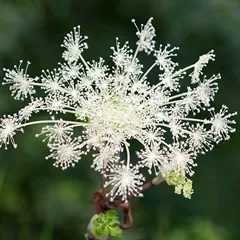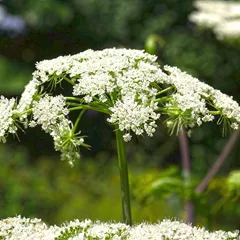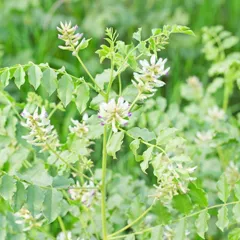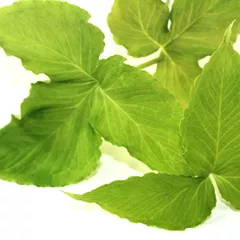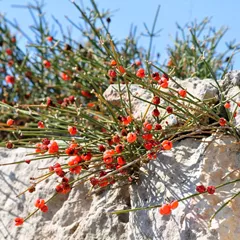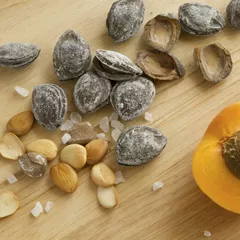Upper respiratory tract infections according to Chinese Medicine
The information provided here is not a replacement for a doctor. You shouldn't use it for the purpose of self-diagnosing or self-medicating but rather so you can have a more informed discussion with a professional TCM practitioner.
Upper respiratory tract infections factsheet
Possible causes and remedies:
Exterior Dry Cold invading the Lungs
Symptoms: Phlegm Headaches Dry cough and three other symptoms
Recommended formula: Xing Su San
Symptoms: Nausea Vomiting Dizziness and four other symptoms
Recommended formula: Er Chen Tang
In Chinese Medicine, upper respiratory tract infections can be associated with seven so-called "patterns of disharmony". Chinese Medicine sees the body as a system, not a sum of isolated parts. A "pattern" is when the system's harmony is disrupted. It is not equivalent to the Western concept of "disease", as a matter of fact here upper respiratory tract infections can be caused by seven different patterns.
To understand whether someone's upper respiratory tract infections might be caused by a given pattern, one needs to look for signs and symptoms associated with the pattern beyond what one might typically experience from upper respiratory tract infections alone. For instance when upper respiratory tract infections is caused by the pattern Exterior Dry Cold invading the Lungs, patients also experience symptoms such as headaches, chills without sweating, stuffy nose and dry throat. Similarly, patients with Exterior Dry Cold invading the Lungs typically exhibit wiry (Xian) pulses as well as a tongue with thin white coating.
We've listed below a description of the seven patterns associated with upper respiratory tract infections so that you can start to get an understanding of the various possibilities according to Chinese Medicine.
Once identified, patterns are often treated using herbal formulas. Drinking herbal infusions is the most common remedy in Chinese Medicine, together with acupuncture. Here we detail below fourteen formulas that can help treat the various patterns associated with upper respiratory tract infections, depending on which pattern fits your profile.
The seven "patterns of disharmony" associated with upper respiratory tract infections
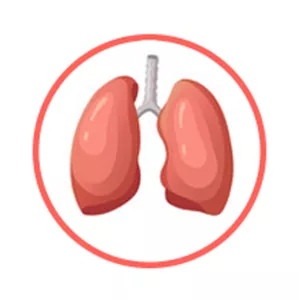
The Lungs is a so-called "Zang" Organ. Learn more about the Lungs in Chinese Medicine
Exterior Dry Cold invading the Lungs
Pulse type(s): Wiry (Xian)
Tongue coating: Thin white coating
Recommended herbal formula: Xing Su San
Symptoms: Phlegm Headaches Dry cough Dry throat Stuffy nose Chills without sweating
Upper respiratory tract infections might be due to Exterior Dry Cold invading the Lungs if the condition is paired with typical pattern symptoms such as headaches, chills without sweating, stuffy nose and dry throat. Similarly, patients with Exterior Dry Cold invading the Lungs typically exhibit wiry (Xian) pulses as well as a tongue with thin white coating.
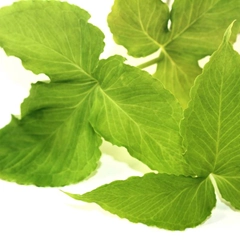
Crow-Dipper Rhizomes (Ban Xia) is the key herb for Er Chen Tang, a formula used for Damp-Cold Phlegm
Damp-Cold Phlegm
Pulse type(s): Slippery (Hua)
Tongue coating: Thick white coating
Recommended herbal formula: Er Chen Tang
Symptoms: Nausea Vomiting Dizziness Palpitations Focal distention Coughing with copious white sputum Stifling sensation in the chest and epigastrium
Upper respiratory tract infections might be due to Damp-Cold Phlegm if the condition is paired with typical pattern symptoms such as nausea, vomiting, stifling sensation in the chest and epigastrium and palpitations. Similarly, patients with Damp-Cold Phlegm typically exhibit slippery (Hua) pulses as well as a tongue with thick white coating.

The Lungs is a so-called "Zang" Organ. Learn more about the Lungs in Chinese Medicine
Phlegm Heat in the Lungs
Pulse type(s): Rapid (Shu), Slippery (Hua)
Tongue coating: Sticky coating, Yellow coating
Tongue shape: Swollen
Recommended herbal formula: Xiao Xian Xiong Tang
Symptoms: Clump Phlegm Chest pain Constipation Epigastric pain Clumping in the chest Bitter taste in the mouth Epigastric focal distention Focal distention of the chest Coughing of copious thick yellow sputum
Upper respiratory tract infections might be due to Phlegm Heat in the Lungs if the condition is paired with typical pattern symptoms such as constipation, bitter taste in the mouth, coughing of copious thick yellow sputum and chest pain. Similarly, patients with Phlegm Heat in the Lungs typically exhibit rapid (Shu) or slippery (Hua) pulses as well as a tongue with sticky coating, yellow coating.
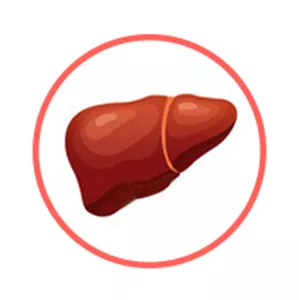
The Liver is a so-called "Zang" Organ. Learn more about the Liver in Chinese Medicine
Lung Qi Deficiency and Liver Qi Stagnation
Pulse type(s): Empty (Xu), Tight (Jin)
Tongue coating: Thin white coating
Tongue color: Normal (light red), Pale
Recommended herbal formula: Xiao Chai Hu Tang
Symptoms: Coughing Dizziness Headaches Depression Moving pain Listlessness Hypochondrium fullness
Upper respiratory tract infections might be due to Lung Qi Deficiency and Liver Qi Stagnation if the condition is paired with typical pattern symptoms such as coughing, hypochondrium fullness, dizziness and headaches. Similarly, patients with Lung Qi Deficiency and Liver Qi Stagnation typically exhibit empty (Xu) or tight (Jin) pulses as well as a normal (light red), pale tongue with thin white coating.
Read more about Lung Qi Deficiency and Liver Qi Stagnation here
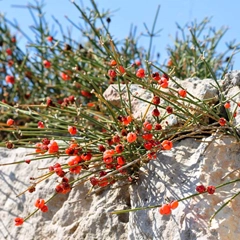
Ephedra (Ma Huang) is the key herb for Da Qing Long Tang, a formula used for Exterior Cold invading with Interior Heat from Stagnation
Exterior Cold invading with Interior Heat from Stagnation
Pulse type(s): Floating (Fu), Tight (Jin)
Recommended herbal formula: Da Qing Long Tang
Symptoms: Thirst Irritability Generalized body pain Severe fever and chills without sweating
Upper respiratory tract infections might be due to Exterior Cold invading with Interior Heat from Stagnation if the condition is paired with typical pattern symptoms such as severe fever and chills without sweating, generalized body pain, thirst and irritability. Similarly, patients with Exterior Cold invading with Interior Heat from Stagnation typically exhibit floating (Fu) or tight (Jin) pulses.
Read more about Exterior Cold invading with Interior Heat from Stagnation here

Ephedra (Ma Huang) is the key herb for Da Qing Long Tang, a formula used for Phlegm-Fluids in the limbs
Phlegm-Fluids in the limbs
Pulse type(s): Tight (Jin), Wiry (Xian)
Tongue coating: Sticky coating, Thick white coating
Tongue shape: Swollen
Recommended herbal formula: Da Qing Long Tang
Symptoms: Thirst Irritability Absence of sweating Feeling of heaviness Generalized body pain Alternating fever and chills Superficial edema in the extremities
Upper respiratory tract infections might be due to Phlegm-Fluids in the limbs if the condition is paired with typical pattern symptoms such as feeling of heaviness, generalized body pain, superficial edema in the extremities and alternating fever and chills. Similarly, patients with Phlegm-Fluids in the limbs typically exhibit tight (Jin) or wiry (Xian) pulses as well as a tongue with sticky coating, thick white coating.

Ephedra (Ma Huang) is the key herb for Xiao Qing Long Tang, a formula used for Phlegm-Fluids above the diaphragm
Phlegm-Fluids above the diaphragm
Pulse type(s): Floating (Fu), Tight (Jin)
Tongue coating: Thick white coating
Tongue shape: Swollen
Recommended herbal formula: Xiao Qing Long Tang
Symptoms: Wheezing No thirst Absence of sweating Generalized body pain Alternating fever and chills General sensation of heaviness Stifling sensation in the chest Coughing of copious thin and white sputum
Upper respiratory tract infections might be due to Phlegm-Fluids above the diaphragm if the condition is paired with typical pattern symptoms such as alternating fever and chills, absence of sweating, wheezing and stifling sensation in the chest. Similarly, patients with Phlegm-Fluids above the diaphragm typically exhibit floating (Fu) or tight (Jin) pulses as well as a tongue with thick white coating.
The fourteen herbal formulas that might help with upper respiratory tract infections
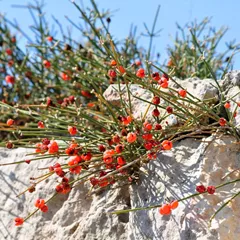
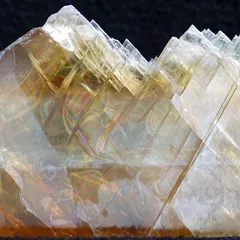
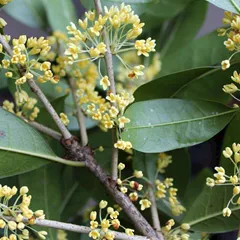
The top herbs in Da Qing Long Tang are Ephedra (Ma Huang), Gypsum (Shi Gao) and Cinnamon Twigs (Gui Zhi)
Da Qing Long Tang
Source date: 220 AD
Number of ingredients: 7 herbs
Key actions: Promotes sweating. Releases the Exterior. Clears Interior Heat.
Why might Da Qing Long Tang help with upper respiratory tract infections?
Because it is a formula often recommended to help with the patterns Exterior Cold invading with Interior Heat from Stagnation and Phlegm-Fluids in the limbs which are sometimes associated with upper respiratory tract infections. If any of these patterns look like something you might suffer from, this formula might help (although please seek confirmation with a professional practitioner beforehand).
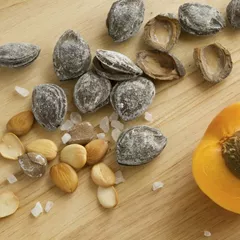
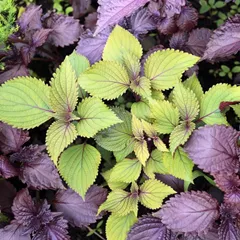
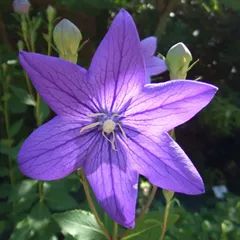
The top herbs in Xing Su San are Apricot Seeds (Xing Ren), Perilla Leaves (Zi Su Ye) and Platycodon Roots (Jie Geng)
Xing Su San
Source date: 1798 AD
Number of ingredients: 11 herbs
Key actions: Clears Dry-Cold. Disseminates the Lung Qi and relieves cough. Transforms thin mucus.
Why might Xing Su San help with upper respiratory tract infections?
Because it is a formula often recommended to help treat Exterior Dry Cold invading the Lungs, a pattern sometimes associated with upper respiratory tract infections. If it looks like you might suffer from Exterior Dry Cold invading the Lungs, this formula might help (although please seek confirmation with a professional practitioner beforehand).
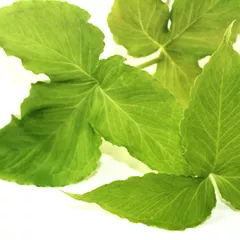
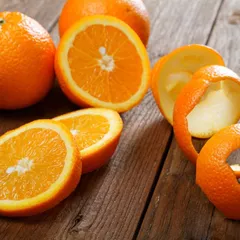

The top herbs in Er Chen Tang are Crow-Dipper Rhizomes (Ban Xia), Tangerine Peel (Chen Pi) and Poria-Cocos Mushrooms (Fu Ling)
Er Chen Tang
Source date: 1148 AD
Number of ingredients: 5 herbs
Key actions: Dries Damp and dispels Phlegm. Regulates Qi and harmonizes the Middle Burner (Stomach and Spleen).
Why might Er Chen Tang help with upper respiratory tract infections?
Because it is a formula often recommended to help treat Damp-Cold Phlegm, a pattern sometimes associated with upper respiratory tract infections. If it looks like you might suffer from Damp-Cold Phlegm, this formula might help (although please seek confirmation with a professional practitioner beforehand).

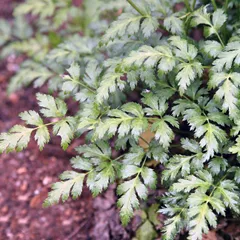

The top herbs in Xiao Xian Xiong Tang are Snake Gourds (Gua Lou), Goldthread Rhizomes (Huang Lian) and Crow-Dipper Rhizomes (Ban Xia)
Xiao Xian Xiong Tang
Source date: 220 AD
Number of ingredients: 3 herbs
Key actions: Clears Heat. Transforms Phlegm. Expands the chest. Dissipates clumps.
Why might Xiao Xian Xiong Tang help with upper respiratory tract infections?
Because it is a formula often recommended to help treat Phlegm Heat in the Lungs, a pattern sometimes associated with upper respiratory tract infections. If it looks like you might suffer from Phlegm Heat in the Lungs, this formula might help (although please seek confirmation with a professional practitioner beforehand).
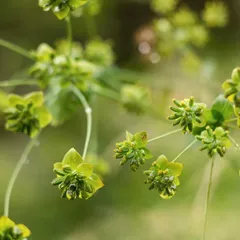


The top herbs in Xiao Chai Hu Tang are Bupleurum Roots (Chai Hu), Baikal Skullcap Roots (Huang Qin) and Crow-Dipper Rhizomes (Ban Xia)
Xiao Chai Hu Tang
Source date: 220 AD
Number of ingredients: 7 herbs
Key actions: Treats the Lesser Yang Channels (Gallbladder and Triple Warmer). Regulates the Liver and Spleen functions. Addresses combined Yin-Yang symptoms of External and Internal, Excess and Deficiency, and Hot and Cold.
Why might Xiao Chai Hu Tang help with upper respiratory tract infections?
Because it is a formula often recommended to help treat Lung Qi Deficiency and Liver Qi Stagnation, a pattern sometimes associated with upper respiratory tract infections. If it looks like you might suffer from Lung Qi Deficiency and Liver Qi Stagnation, this formula might help (although please seek confirmation with a professional practitioner beforehand).


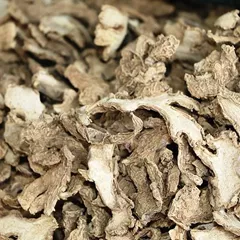
The top herbs in Xiao Qing Long Tang are Ephedra (Ma Huang), Cinnamon Twigs (Gui Zhi) and Dried Ginger (Gan Jiang)
Xiao Qing Long Tang
Source date: 220 AD
Number of ingredients: 8 herbs
Key actions: Releases the Exterior. Transforms Phlegm-Fluids. Warms the Lungs. Directs Rebellious Qi downward.
Why might Xiao Qing Long Tang help with upper respiratory tract infections?
Because it is a formula often recommended to help treat Phlegm-Fluids above the diaphragm, a pattern sometimes associated with upper respiratory tract infections. If it looks like you might suffer from Phlegm-Fluids above the diaphragm, this formula might help (although please seek confirmation with a professional practitioner beforehand).
Qiang Huo Sheng Shi Tang
Why might Qiang Huo Sheng Shi Tang help with upper respiratory tract infections?
Because it is a formula often recommended to help treat , a pattern sometimes associated with upper respiratory tract infections. If it looks like you might suffer from , this formula might help (although please seek confirmation with a professional practitioner beforehand).
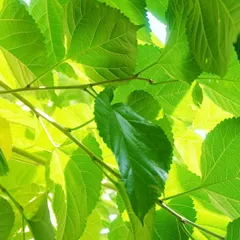
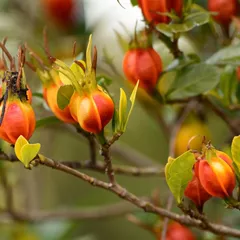

The top herbs in Sang Xing Tang are Mulberry Leaves (Sang Ye), Cape Jasmine Fruits (Zhi Zi) and Apricot Seeds (Xing Ren)
Sang Xing Tang
Why might Sang Xing Tang help with upper respiratory tract infections?
Because it is a formula often recommended to help treat , a pattern sometimes associated with upper respiratory tract infections. If it looks like you might suffer from , this formula might help (although please seek confirmation with a professional practitioner beforehand).
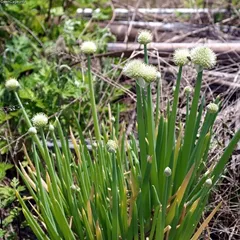
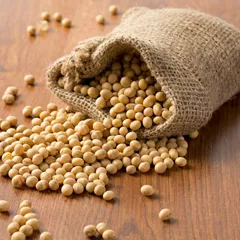

The top herbs in Cong Chi Tang are Scallions (Cong Bai) and Fermented Soybeans (Dan Dou Chi)
Cong Chi Tang
Source date: 3rd Centry
Number of ingredients: 2 herbs
Key actions: Unblocks the Yang Qi (Defensive Qi) in the Exterior . Induces sweating .
Why might Cong Chi Tang help with upper respiratory tract infections?
Because it is a formula often recommended to help treat , a pattern sometimes associated with upper respiratory tract infections. If it looks like you might suffer from , this formula might help (although please seek confirmation with a professional practitioner beforehand).



The top herbs in Huo Ren Cong Shi Tang are Scallions (Cong Bai), Fermented Soybeans (Dan Dou Chi) and Ephedra (Ma Huang)
Huo Ren Cong Shi Tang
Source date: 1108 AD
Number of ingredients: 4 herbs
Key actions: Unblocks the Yang Qi (Defensive Qi) in the Exterior . Induces sweating .
Why might Huo Ren Cong Shi Tang help with upper respiratory tract infections?
Because it is a formula often recommended to help treat , a pattern sometimes associated with upper respiratory tract infections. If it looks like you might suffer from , this formula might help (although please seek confirmation with a professional practitioner beforehand).

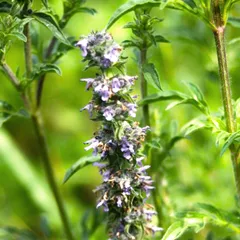
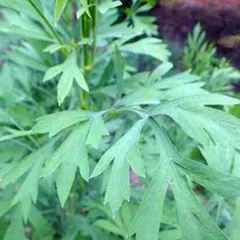
The top herbs in Jia Wei Xiang Su San are Perilla Leaves (Zi Su Ye), Japanese Catnip (Jing Jie) and Saposhnikovia Roots (Fang Feng)
Jia Wei Xiang Su San
Source date: 1732 AD
Number of ingredients: 10 herbs
Key actions: Promote sweating . Releases the Exterior .
Why might Jia Wei Xiang Su San help with upper respiratory tract infections?
Because it is a formula often recommended to help treat , a pattern sometimes associated with upper respiratory tract infections. If it looks like you might suffer from , this formula might help (although please seek confirmation with a professional practitioner beforehand).
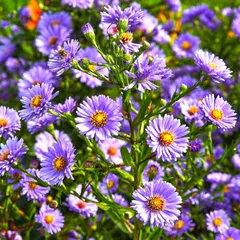
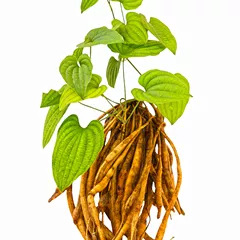

The top herbs in Zhi Sou San are Aster Roots (Zi Wan), Stemona Roots (Bai Bu) and Platycodon Roots (Jie Geng)
Zhi Sou San
Source date: 1732 AD
Number of ingredients: 7 herbs
Key actions: Transforms Phlegm and stops coughing. Disperses the Exterior. Spreads the Lung Qi.
Why might Zhi Sou San help with upper respiratory tract infections?
Because it is a formula often recommended to help treat , a pattern sometimes associated with upper respiratory tract infections. If it looks like you might suffer from , this formula might help (although please seek confirmation with a professional practitioner beforehand).

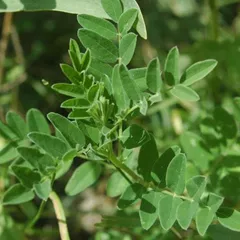
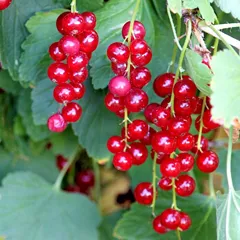
The top herbs in Bu Fei Tang are Ginseng (Ren Shen), Milkvetch Roots (Huang Qi) and Schisandra Berries (Wu Wei Zi)
Bu Fei Tang
Source date: 1331 AD
Number of ingredients: 6 herbs
Key actions: Augments the Qi. Stabilizes the Exterior.
Why might Bu Fei Tang help with upper respiratory tract infections?
Because it is a formula often recommended to help treat , a pattern sometimes associated with upper respiratory tract infections. If it looks like you might suffer from , this formula might help (although please seek confirmation with a professional practitioner beforehand).
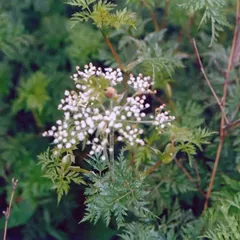
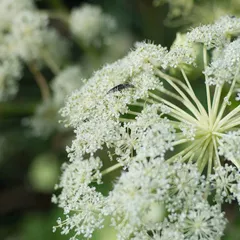
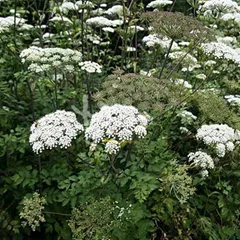
The top herbs in Chuan Xiong Cha Tiao San are Szechuan Lovage Roots (Chuan Xiong), Angelica Roots (Bai Zhi) and Notopterygium Roots (Qiang Huo)
Chuan Xiong Cha Tiao San
Why might Chuan Xiong Cha Tiao San help with upper respiratory tract infections?
Because it is a formula often recommended to help treat , a pattern sometimes associated with upper respiratory tract infections. If it looks like you might suffer from , this formula might help (although please seek confirmation with a professional practitioner beforehand).
Symptoms related to upper respiratory tract infections
Generalized body pain Headaches Phlegm Dizziness Thirst Irritability Alternating fever and chills Absence of sweating Chills without sweating Stuffy nose

